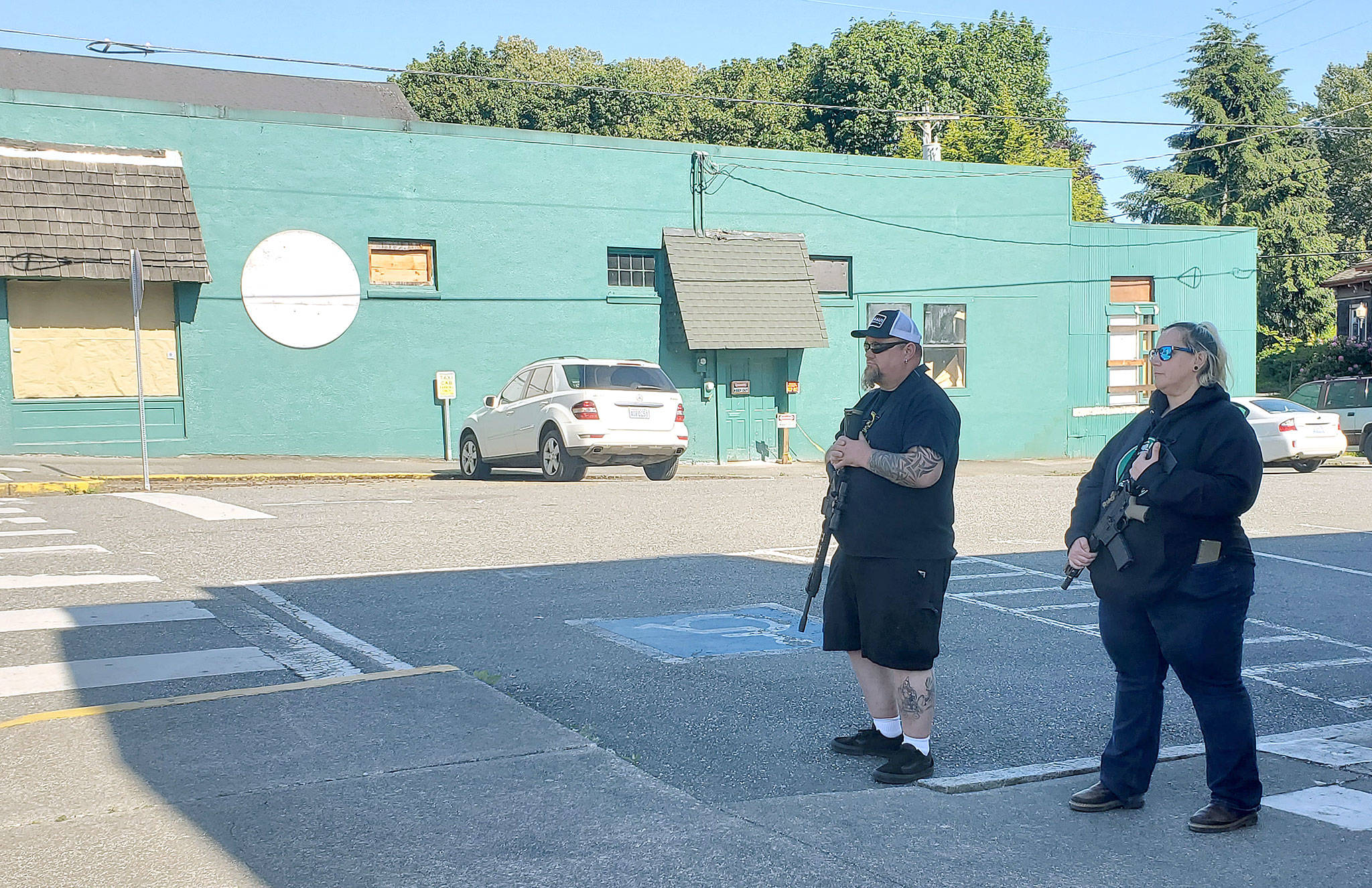By The Herald Editorial Board
As we’ve seen throughout last year’s unrest and up to the Jan. 6 riot at the U.S. Capitol, public demonstrations — where passions and personal convictions were already running hot — became an even more volatile and too often deadly mix when firearms and other weapons were brandished.
Kyle Rittenhouse, a 17-year-old Illinois resident, crossed state lines, armed with an AR-15-style rifle, and is alleged to have killed two protesters on Aug. 25 in Kenosha, Wis., following the police shooting of a black man two days earlier. Rittenhouse, who has claimed self-defense, has said he went to the Kenosha demonstrations to protect private property. He is out on bail, awaiting trial.
Closer to home, in the days following the suffocation death of George Floyd by a police officer on May 25 in Minneapolis, a peaceful demonstration the following Saturday in Snohomish included hundreds lining the city’s streets, protesting Floyd’s death and chanting “Black lives matter!” That demonstration was followed the next day in the same usually quiet city as people, openly carrying assault-style weapons and other firearms, lined First Street, apparently in the belief — later determined to be a hoax promoted by a white nationalist organization — that an antifa group had announced on social media plans to vandalize and loot shops in Snohomish and other local communities.
No violence nor arrests followed either demonstration, but the open display of firearms concerned many, including the Washington National Guard’s Maj. Gen. Bret Daugherty, who at a news conference with Gov. Jay Inslee, asked people to “remain calm and please don’t run around with weapons.”
“The more weapons there are at a site, the more chances to have an accidental shooting,” Daughtery said.
Then earlier this month the passions of a bitter election season came to a deadly head when — encouraged by then-President Trump — hundreds of protesters stormed the U.S. Capitol, attempting to prevent Congress’ certification of the Electoral College results that determined Joe Biden as the election’s winner. Five people died in the riot, including a Capitol police officer, struck in the head with a fire extinguisher.
What almost certainly prevented worse carnage — more injuries, far greater loss of life and a bloody insurrection — was the District of Columbia’s ban on the open carry of firearms during demonstrations and within the district’s limits.
In addition to the District of Columbia, six states, including Alabama and North Carolina, bar the open-carry of firearms during public demonstrations. Nine other states, including Mississippi, Tennessee and South Carolina, allow local municipalities to adopt and enforce such restrictions.
Washington state and 35 other states do neither. That would change under a bill that is being discussed by the state Legislature. Senate Bill 5038 would prohibit the open carry of firearms and other weapons at public demonstrations as well as on the grounds of the state capitol, its buildings and other legislative locations, classifying violations as a gross misdemeanor.
Speaking during a virtual public hearing on the legislation, the bill’s sponsor, Sen. Patty Kuderer, D-Bellevue, said the restrictions are necessary because the presence of these weapons increases the risks of violence and death, and intimidate those exercising their First Amendment rights to free speech. Her legislation is not, Kuderer said, attempting to use the First Amendment against the Second.
“We put restrictions on amendments all the time. This is just a logical extension of a restriction. It doesn’t suspend the Second Amendment right; you still have that right. You are just limited as to where you can exercise it,” Kuderer said.
The legislation, of course, exempts from its provisions state and local law enforcement, those who are trained and trusted to handle firearms in such situations. Nor would the restrictions apply to anyone with a firearm inside a private residence or business that happened to be near a demonstration.
Opponents of the legislation challenged the assertion that firearms at demonstrations are meant to intimidate and argued that barring them would limit their use for self-defense.
Yet, the legislation makes no restriction of those with concealed-carry pistol licenses from possessing a firearm, concealed from view, allowing them to practice their right to self-defense while limiting the potential for intimidation.
Some firearm owners will – and did so during the hearing — profess only good intentions, insisting they are no threat to others. In nearly all instances that is the case; gun owners are law-abiding and careful. But that intent can be difficult to discern when someone is holding a weapon that was designed for military use and has been abused in many mass shootings.
Cheryl Stumbo, who was shot and critically wounded by a gunman during a 2006 shooting at the Jewish Federation of Greater Seattle, illustrated during the hearing what that intimidation feels like.
Testifying a few years ago during a committee meeting at the state capitol regarding a bill on background checks, Stumbo described being seated at a witness table, next to the Seattle police chief, with her back turned to a row of bill opponents who were openly carrying firearms.
“Noticing my nerves, the chief whispered to me to not worry. I replied, ‘You’re wearing a bullet-proof vest. I’m not,’” said Stumbo, an activist with state chapters for Every Town for Gun Safety and Moms Demand Action.
“Openly armed extremists in the halls of democracy are a real and imminent threat to the safety of Washington and to a functioning legislature,” Stumbo said.
Especially now, we need our public spaces where concerns can be shouted and ideas debated — city council halls, legislative hearing rooms and city streets and parks — to welcome all, inviting a free exchange of comment and discussion. Firearms strapped across chests bring nothing to those debates but unease.
Media Player Error
Talk to us
> Give us your news tips.
> Send us a letter to the editor.
> More Herald contact information.

























